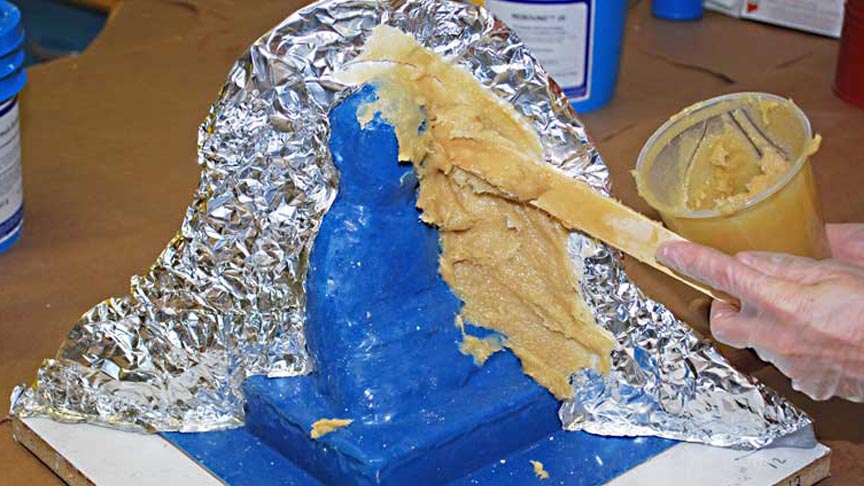New Plasti-Paste™ II is a two component fiber-filled resin that is designed for vertical surface application. This no-odor formulation is an improved version of our original Plasti-Paste™ formula.
Plasti-Paste™ II Is More Than Just A Mother Mold / Support Shell Plastic...
Plasti-Paste™ is a thick, fiber-filled rigid plastic that was developed years ago as a mother mold or support shell material for supporting brush-on rubber molds during casting.
Plasti-Paste™ remains a very popular product because it is easy to use and easy to control. It stays where you put it on a vertical or inverted surface and quickly cures to a very tough and impact resistant plastic.
The original Plasti-Paste™ exuded an inert oil which made handling the cured plastic unpleasant, and we received requests from customers wanting to paint the cured plastic, but the oil made this impossible.
New Plasti-Paste™ II is mercury-free and is a more rigid, dry and paintable version of the original. It does not exude an oil and can be painted with primer and/or acrylic paints, making it suitable to be used as a mother mold material or fabrication material.
Plasti-Paste™ II is used in the same way as the original. Mix ratio is 1A:2B by volume, working time is 10 minutes, and handling time is 90 minutes at room temperature (depending on mass).
Once fully cured, Plasti-Paste™ II can be sanded, drilled, machined, and painted. It is also dimensionally stable, has heat resistance to 130°F / 55°C(158°F / 70°C with post cure) and will last for years in just about any application.
Plasti-Paste™ II bonds to itself permanently, so more can be added at any time as long as the cured plastic surface is clean.
Plasti-Paste™ II can be color pigmented with SO-Strong™ color tints. In addition to being a virtually unbreakable mother material, Plasti-Paste™ II is a versatile fabricating material that can be used to create themed environment elements, special effects, or to coat a verity of surfaces that can then be painted. It can also be used as a powerful adhesive to bond like and unlike surfaces, or as a sandable patch material to repair wood and other surfaces.
